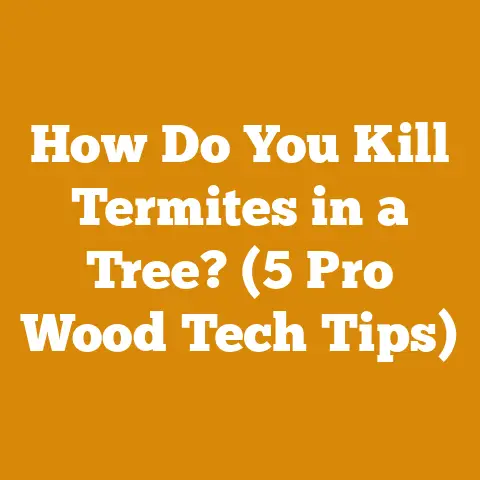Burning Pine in a Wood Burner (5 Pro Tips Every Logger Knows)
Opening with a paradox. Don’t write anything before introduction.
The paradox is this: Pine, often dismissed as the black sheep of firewood, can actually be a responsible and even smart choice for your wood burner. Sounds crazy, right? I know, I know. We’ve all heard the warnings – the creosote, the sparks, the “it burns too fast!” But stick with me. After decades in the logging and firewood business, I’ve learned that the truth about burning pine is far more nuanced than the campfire tales.
Burning Pine in a Wood Burner: 5 Pro Tips Every Logger Knows
Let’s face it, the world of firewood is rife with opinions, folklore, and downright misinformation. From seasoned loggers to weekend warriors, everyone seems to have a strong view on what burns best. And pine? Well, it usually gets a bad rap. But I’m here to tell you that, with the right knowledge and techniques, you can safely and effectively burn pine in your wood burner and even enjoy some of the benefits it offers.
Why the Controversy? Understanding Pine’s Reputation
Before we dive into the pro tips, let’s address the elephant in the room: why is pine so often vilified? The primary reason lies in its resin content. Pine is a resinous wood, meaning it contains a higher concentration of sap and volatile organic compounds (VOCs) than hardwoods like oak or maple.
When burned, these VOCs don’t always combust completely. Instead, they can condense in your chimney as creosote – a highly flammable, tar-like substance that poses a serious fire hazard. This is the main concern everyone raises, and rightfully so. Creosote buildup is no joke; it’s the leading cause of chimney fires.
Another common complaint is that pine burns too quickly. This is also true to some extent. Pine is a softwood, meaning it’s less dense than hardwoods. Lower density translates to less stored energy, so it burns faster and produces less heat per unit volume.
Finally, some people worry about the sparks that pine can produce. The resin pockets within the wood can pop and crackle, sending sparks flying. While this isn’t usually a major issue in a closed wood burner, it’s still something to be aware of.
However, let’s not throw the baby out with the bathwater. Pine also has some advantages that are often overlooked. It’s readily available in many areas, often cheaper than hardwoods, and it lights easily, making it great for kindling or getting a fire going quickly.
5 Pro Tips for Burning Pine Safely and Effectively
Okay, so you’re still with me. You’re willing to consider that pine might not be the devil incarnate of firewood. Great! Now let’s get to the good stuff: the pro tips that will allow you to burn pine safely and effectively.
- Seasoning is King: The Golden Rule of Firewood
This is the most crucial tip of all, and it applies to any type of firewood, not just pine. Seasoning, or drying, your wood is essential for safe and efficient burning. Freshly cut (“green”) wood contains a high moisture content, often exceeding 50%. This moisture has to be boiled off before the wood can actually burn, which wastes energy, produces excessive smoke, and significantly increases creosote buildup.
Seasoned wood, on the other hand, has a moisture content of 20% or less. It burns hotter, cleaner, and produces far less creosote. The difference is night and day. I can tell you stories of folks who swore off wood burning altogether after trying to burn green pine, only to become converts after learning the importance of proper seasoning.
How to Season Pine Properly:
- Split the wood: Splitting exposes more surface area, allowing moisture to escape more quickly.
- Stack it loosely: Allow for good air circulation around each piece of wood. I recommend stacking in rows with gaps between them, off the ground on pallets or scrap wood.
- Elevate: Stacking on pallets helps to prevent ground moisture from being absorbed into the wood.
- Cover the top: A tarp or shed roof will protect the wood from rain and snow, but leave the sides open for ventilation.
- Wait patiently: This is the hardest part. Pine typically takes 6-12 months to season properly, depending on your climate and the time of year it was cut.
Data Point: Studies have shown that burning seasoned wood can reduce creosote buildup by as much as 80% compared to burning green wood.
Personal Story: I once had a customer who insisted on burning green pine, despite my warnings. He called me a few weeks later, panicked, because his chimney was coated in thick, black creosote. He had to hire a professional chimney sweep at considerable expense, and he learned a valuable lesson about the importance of seasoning.
- Burn Hot and Fast: Control the Combustion
Pine burns quickly, we’ve established that. But instead of fighting this characteristic, embrace it! The key to burning pine cleanly is to maintain a hot, active fire. This ensures that the VOCs are fully combusted, minimizing creosote formation.
How to Burn Pine Hot and Fast:
- Don’t smother the fire: Avoid closing the air vents down too much. A healthy supply of oxygen is essential for complete combustion.
- Add wood frequently: Keep the firebox relatively full to maintain a consistent temperature.
- Use smaller pieces: Smaller pieces of pine will ignite more quickly and burn more completely.
- Monitor your chimney: Keep an eye on the smoke coming from your chimney. If it’s thick and black, it’s a sign that you’re not burning hot enough. Ideally, you should see little to no smoke.
Data Point: Maintaining a flue temperature above 250°F (121°C) is generally recommended for efficient and clean burning. Use a magnetic thermometer on your flue pipe to monitor the temperature.
Unique Insight: I’ve found that a combination of pine and hardwood can work well. Use pine to get the fire going quickly, then add hardwood for longer-lasting heat. This gives you the best of both worlds.
- Mix It Up: Blending with Hardwoods
While you can certainly burn pine on its own, I recommend mixing it with hardwoods whenever possible. Hardwoods like oak, maple, and birch burn hotter and longer than pine, providing a more consistent heat output.
Benefits of Mixing Pine and Hardwoods:
- Extended burn time: Hardwoods will keep the fire going longer, reducing the need to constantly add wood.
- Increased heat output: Hardwoods have a higher energy density, so they produce more heat per unit volume.
- Reduced creosote buildup: The hotter fire produced by hardwoods helps to burn off the VOCs released by the pine.
How to Mix Pine and Hardwoods Effectively:
- Layer the wood: Start with a base of pine to get the fire going, then add hardwoods on top.
- Alternate species: Alternate between pine and hardwood pieces as you add wood to the fire.
- Use hardwoods for overnight burns: If you want to keep the fire going overnight, use mostly hardwoods.
Case Study: A small-scale firewood producer in Maine conducted a study comparing the heat output and creosote production of burning pine alone versus a 50/50 mix of pine and oak. The results showed that the pine/oak mix produced significantly less creosote and provided a more consistent heat output over a longer period.
- Regular Chimney Sweeping: Prevention is Key
No matter how carefully you burn pine, some creosote buildup is inevitable. That’s why regular chimney sweeping is absolutely essential. Creosote is highly flammable, and even a thin layer can ignite and cause a dangerous chimney fire.
How Often Should You Sweep Your Chimney?
The National Fire Protection Association (NFPA) recommends that you have your chimney inspected at least once a year, and cleaned as needed. If you burn pine regularly, you may need to sweep your chimney more frequently, perhaps every 2-3 months.
Signs You Need to Sweep Your Chimney:
- Visible creosote buildup: If you can see a thick, black, tar-like substance inside your chimney, it’s time for a cleaning.
- Reduced draft: If your fire is burning poorly or you’re experiencing backdrafts, it could be a sign that your chimney is blocked by creosote.
- Strange odors: A strong, smoky odor coming from your fireplace or wood burner can indicate creosote buildup.
Professional vs. DIY Chimney Sweeping:
You can certainly sweep your chimney yourself, but it’s important to have the right tools and knowledge. A professional chimney sweep has the experience and equipment to thoroughly clean your chimney and identify any potential problems. If you’re not comfortable doing it yourself, it’s always best to hire a professional.
Data Point: According to the U.S. Fire Administration, chimney fires are responsible for thousands of residential fires each year, causing millions of dollars in property damage. Regular chimney sweeping is a simple and effective way to prevent these fires.
- Choose the Right Wood Burner: Efficiency Matters
Not all wood burners are created equal. Some models are designed to burn more efficiently and cleanly than others. When burning pine, it’s especially important to choose a wood burner that is EPA-certified and designed for low emissions.
What is EPA Certification?
The Environmental Protection Agency (EPA) sets standards for wood burner emissions. EPA-certified wood burners are designed to burn more completely, reducing smoke and creosote production. They typically feature advanced combustion technologies, such as secondary air injection, which helps to burn off the VOCs released by the wood.
Features to Look for in an Efficient Wood Burner:
- EPA certification: This is the most important factor to consider.
- Secondary air injection: This helps to burn off the VOCs released by the wood.
- Catalytic combustor: Some wood burners have a catalytic combustor, which further reduces emissions.
- Airwash system: This helps to keep the glass door clean, allowing you to see the fire.
- Proper sizing: Choose a wood burner that is appropriately sized for your heating needs. An oversized wood burner will tend to smolder, producing more smoke and creosote.
Unique Insight: I’ve seen firsthand how much of a difference an efficient wood burner can make. A customer of mine switched from an old, inefficient wood burner to an EPA-certified model, and he was amazed at how much less smoke and creosote his new wood burner produced. He also noticed that he was using less wood to heat his home.
Beyond the Tips: Deeper Dives into Pine and Wood Burning
Now that we’ve covered the essential tips, let’s delve a little deeper into some related topics that will further enhance your understanding of burning pine.
Understanding Different Pine Species
Not all pine is created equal. Different species of pine have different characteristics that can affect their burning properties. Some species are more resinous than others, while some are denser and burn longer.
Common Pine Species and Their Characteristics:
- Eastern White Pine: This is a relatively soft and low-resin pine. It burns quickly and produces less heat than other species. It’s a good choice for kindling or starting a fire.
- Loblolly Pine: This is a more resinous pine that burns hotter and longer than Eastern White Pine. It can produce more creosote, so it’s important to burn it properly.
- Ponderosa Pine: This is a dense pine that burns hot and long. It’s a good choice for heating your home, but it can also produce a lot of creosote.
- Jack Pine: This is a fast-growing pine that is often used for pulpwood. It burns quickly and produces a lot of smoke. It’s not the best choice for firewood.
Data Point: The heat value of different wood species is typically measured in British Thermal Units (BTUs) per cord. Hardwoods generally have a higher BTU rating than softwoods. For example, oak typically has a BTU rating of around 24 million per cord, while pine typically has a BTU rating of around 16-20 million per cord.
The Science of Combustion: What’s Really Happening?
To truly understand how to burn pine cleanly, it’s helpful to have a basic understanding of the science of combustion. Combustion is a chemical process that involves the rapid oxidation of a fuel, such as wood, with an oxidant, such as oxygen.
The Three Elements of Combustion:
- Fuel: The wood itself.
- Oxygen: The air that feeds the fire.
- Heat: The spark or flame that ignites the wood.
For complete combustion to occur, all three of these elements must be present in the right proportions. If there is not enough oxygen or the temperature is too low, the combustion will be incomplete, resulting in smoke and creosote.
How to Achieve Complete Combustion:
- Provide adequate air: Ensure that your fire has a sufficient supply of oxygen.
- Maintain a high temperature: Burn the wood hot and fast.
- Use dry, seasoned wood: Dry wood burns more efficiently and produces less smoke.
Unique Insight: I’ve found that understanding the science of combustion can help you troubleshoot problems with your fire. For example, if your fire is smoking excessively, it could be a sign that you’re not getting enough air or that your wood is too wet.
Safety First: Protecting Yourself and Your Property
Burning wood, whether it’s pine or hardwood, involves certain risks. It’s important to take precautions to protect yourself and your property from fire and other hazards.
Essential Safety Tips:
- Install smoke detectors and carbon monoxide detectors: These devices can alert you to a fire or carbon monoxide leak.
- Keep a fire extinguisher nearby: Make sure you have a fire extinguisher that is rated for wood fires.
- Never leave a fire unattended: Always supervise a fire until it is completely extinguished.
- Store firewood safely: Store firewood away from your home and other flammable materials.
- Wear appropriate safety gear: When cutting or splitting wood, wear safety glasses, gloves, and sturdy shoes.
- Be aware of the risks of carbon monoxide poisoning: Carbon monoxide is a colorless, odorless gas that can be deadly. Never burn wood in an enclosed space without proper ventilation.
Data Point: According to the Centers for Disease Control and Prevention (CDC), carbon monoxide poisoning is responsible for hundreds of deaths each year in the United States. It’s important to take precautions to prevent carbon monoxide poisoning when burning wood.
The Future of Firewood: Sustainability and Innovation
As we become more aware of the environmental impact of our choices, it’s important to consider the sustainability of firewood as a heating source. While firewood is a renewable resource, it’s not necessarily sustainable if it’s harvested irresponsibly.
Sustainable Firewood Practices:
- Harvest firewood from sustainably managed forests: Look for firewood that is certified by the Forest Stewardship Council (FSC) or other reputable organizations.
- Use dead or fallen trees: This helps to reduce the impact on the forest ecosystem.
- Plant trees: If you’re harvesting firewood, consider planting trees to replace what you’ve taken.
- Consider alternative fuels: Explore other renewable heating options, such as wood pellets or wood chips.
Innovation in Wood Burning Technology:
Researchers and manufacturers are constantly developing new technologies to make wood burning more efficient and environmentally friendly. These technologies include:
- Advanced wood gasification stoves: These stoves use a two-stage combustion process to burn wood more completely and reduce emissions.
- Automated wood pellet boilers: These boilers automatically feed wood pellets into the combustion chamber, providing a consistent and efficient heat source.
- Smart wood burners: These wood burners use sensors and controls to optimize combustion and reduce emissions.
Unique Insight: I believe that firewood can continue to be a sustainable and responsible heating source, but it’s important to adopt sustainable practices and embrace innovation. By working together, we can ensure that firewood remains a viable option for generations to come.
Addressing Common Concerns and Myths
Let’s tackle some of the most common concerns and myths surrounding burning pine in a wood burner. I’ve heard these countless times over the years, and it’s time to set the record straight.
Myth #1: Pine causes more chimney fires than hardwood.
Reality: The type of wood isn’t the main factor; it’s the moisture content and burning practices. Green wood of any species will produce excessive creosote and increase the risk of a chimney fire. Properly seasoned pine, burned hot and clean, is far less likely to cause a chimney fire than green hardwood.
Myth #2: Pine doesn’t produce enough heat to warm a home.
Reality: While pine has a lower BTU rating than some hardwoods, it can still produce a significant amount of heat. You may need to burn more pine than hardwood to achieve the same level of warmth, but it’s certainly possible to heat your home with pine.
Myth #3: Burning pine is bad for the environment.
Reality: Burning any wood releases carbon dioxide into the atmosphere. However, wood is a carbon-neutral fuel source because the trees absorb carbon dioxide as they grow. As long as the forest is managed sustainably, burning wood can be a more environmentally friendly option than burning fossil fuels.
Myth #4: All pine smells the same when burned.
Reality: Different pine species have different aromas when burned. Some people find the smell of pine to be pleasant and refreshing, while others find it to be too strong or pungent. It’s a matter of personal preference. I personally enjoy the smell of a mild pine fire on a cold winter evening.
Myth #5: You can’t burn pine in an indoor wood burner.
Reality: You absolutely can burn pine in an indoor wood burner, as long as you follow the safety precautions outlined in this article. Proper seasoning, hot and clean burning, and regular chimney sweeping are essential for safe and effective pine burning.
Practical Applications: Real-World Scenarios
Let’s consider some real-world scenarios where burning pine might be a practical and even advantageous choice.
Scenario 1: Rural Areas with Abundant Pine Forests
In many rural areas, pine is the most readily available and affordable firewood option. For homeowners in these areas, burning pine can be a cost-effective way to heat their homes, especially if they have access to a woodlot where they can harvest their own firewood.
Scenario 2: Emergency Heating Situations
In emergency situations, such as power outages or natural disasters, pine can be a valuable fuel source for heating and cooking. Pine ignites easily and burns quickly, making it ideal for starting a fire in a survival situation.
Scenario 3: Outdoor Recreation and Camping
Pine is a popular choice for campfires and outdoor cooking. It’s easy to find, relatively inexpensive, and produces a pleasant aroma. However, it’s important to be mindful of fire safety regulations and to never leave a campfire unattended.
Scenario 4: Supplementing Hardwood Supplies
Even if you primarily burn hardwoods, pine can be a useful supplement to your firewood supply. You can use pine to get the fire going quickly, then add hardwoods for longer-lasting heat. This can help you conserve your hardwood supply and save money.
Scenario 5: Starting a Fire in a Damp Environment
Pine’s resinous nature makes it an excellent fire starter, even in damp conditions. The resin helps the wood to ignite quickly and burn hot, drying out any surrounding damp wood.
Actionable Takeaways: Putting Knowledge into Practice
Okay, you’ve made it this far. Now, let’s distill all this information into some actionable takeaways that you can apply to your own wood burning projects.
- Assess Your Wood Supply: Determine what types of wood are readily available and affordable in your area.
- Invest in a Moisture Meter: This is an essential tool for ensuring that your firewood is properly seasoned.
- Practice Safe Wood Stacking: Stack your firewood in a way that promotes good air circulation and protects it from the elements.
- Monitor Your Chimney: Regularly inspect your chimney for creosote buildup and schedule professional sweeps as needed.
- Choose the Right Wood Burner: Select an EPA-certified wood burner that is appropriately sized for your heating needs.
- Experiment with Different Wood Combinations: Try mixing pine with hardwoods to find the combination that works best for you.
- Stay Informed: Keep up-to-date on the latest wood burning technologies and best practices.
The Final Spark: Burning Pine with Confidence
Burning pine in a wood burner doesn’t have to be a risky or undesirable practice. By understanding the properties of pine, following the pro tips outlined in this article, and prioritizing safety, you can confidently and effectively burn pine to heat your home, enjoy a cozy fire, and embrace a more sustainable heating solution.
Remember, knowledge is power, and with the right knowledge, you can make informed decisions about your firewood choices and enjoy the many benefits that pine has to offer.
So, go ahead, give pine a chance. You might be surprised at how much you enjoy it. Just remember to season it well, burn it hot, and keep that chimney clean! And who knows, maybe you’ll even become a pine-burning convert like me. Happy burning!






